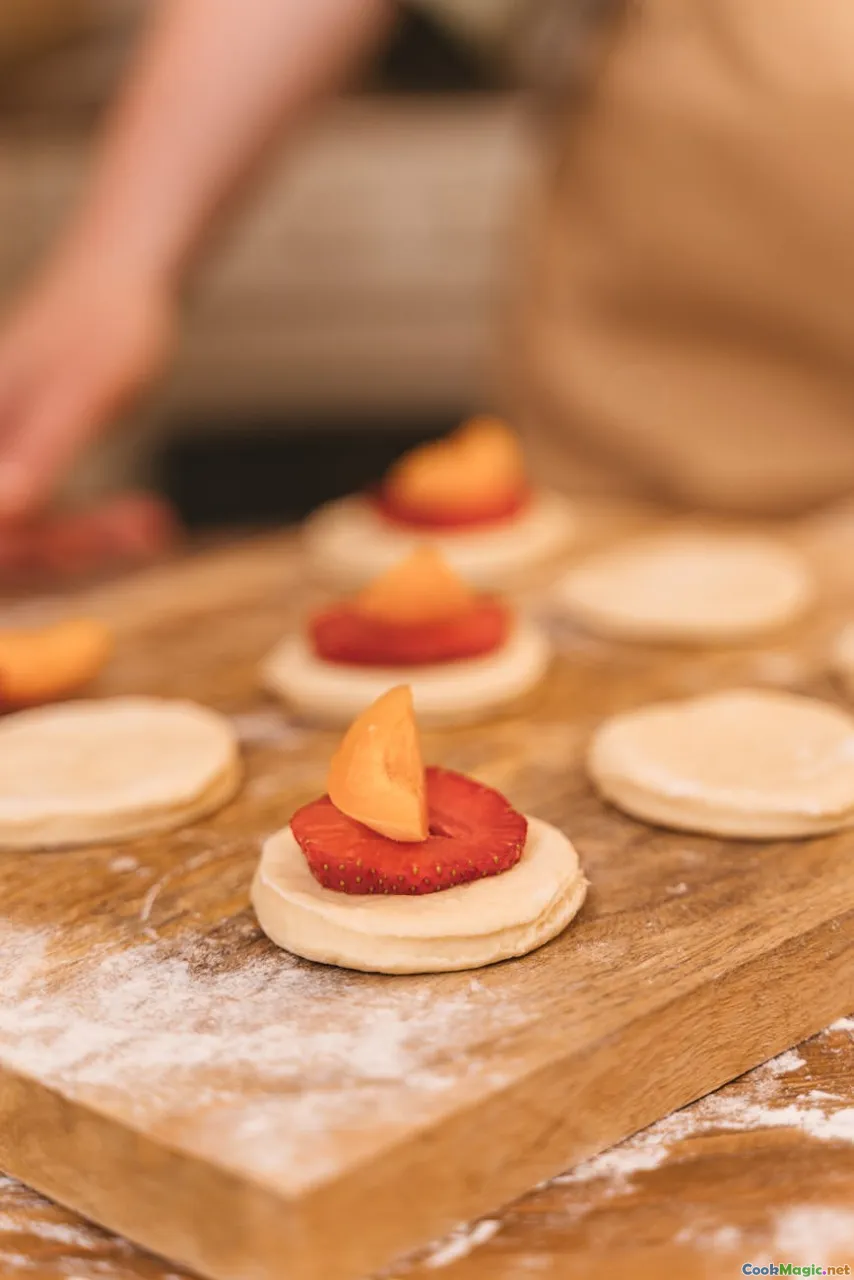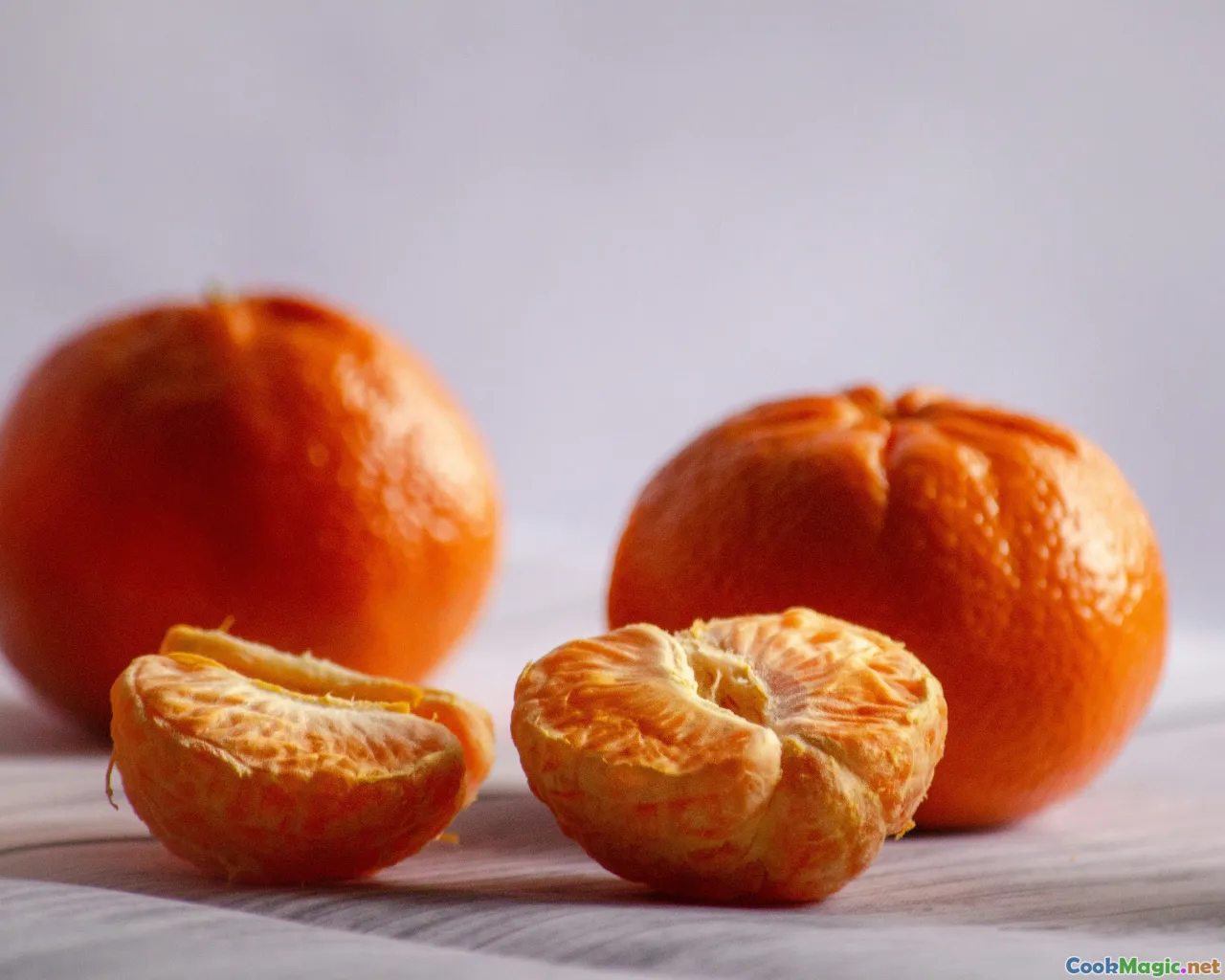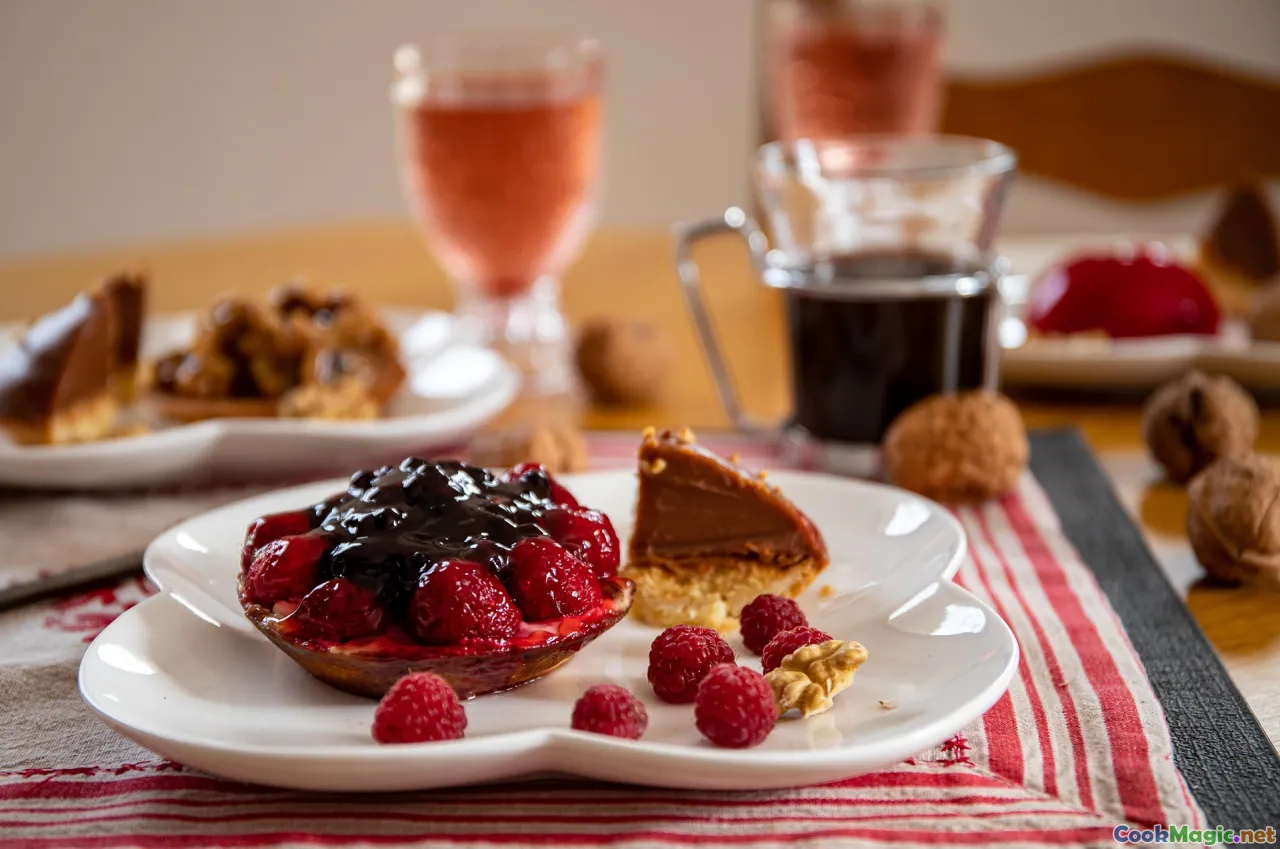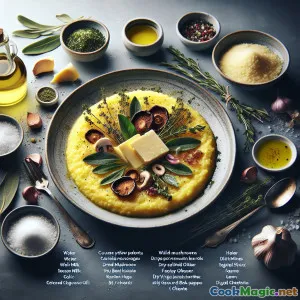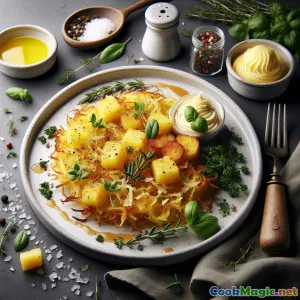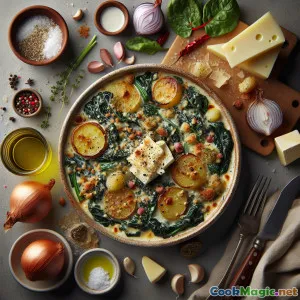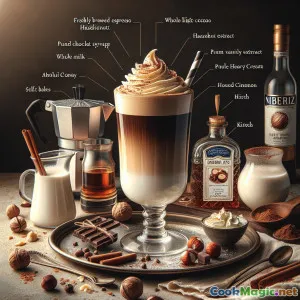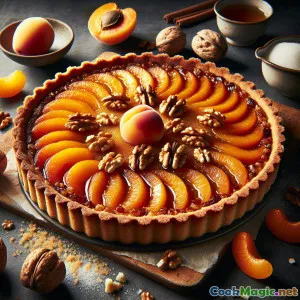
Tart Alpen Valaisan aprikot dan kenari
(Valais Apricot Walnut Alpine Tart)
(0 Ulasan)0
384
Oktober 28, 2025
Laporkan Masalah
Bahan
-
220 grams Tepung serbaguna
(For pastry base; use unbleached if possible)
-
120 grams Mentega tanpa garam (dingin, dipotong dadu)
(High-fat European butter preferred)
-
40 grams Gula halus
(For the pastry)
-
0.25 tsp garam laut halus
(For the pastry)
-
1 large Kuning Telur
(Binds the dough)
-
45 ml Air es
(Add just enough for dough to clump)
-
700 grams Aprikot segar (matang, belah dua, tanpa biji)
(Valais apricots if available)
-
1 tbsp Jus lemon
(Prevents browning, brightens fruit)
-
120 grams Kacang kenari halus, dipanggang ringan
(Cool before grinding; pulse to fine meal)
-
90 grams Gula pasir
(For walnut cream)
-
2 tbsp Madu (alpin, halus)
(Menambahkan rasa manis bunga)
-
80 grams Mentega tawar tanpa garam, dilembutkan
(For walnut cream)
-
2 large Telur
(Room temperature for smoother batter)
-
1 tbsp Tepung serbaguna
(Stabilizes walnut cream)
-
60 ml Krim kental
(Adds silkiness to filling)
-
1 pinch garam laut halus
(Balances sweetness in filling)
-
3 tbsp Selai Aprikot
(For glaze; choose low-pectin)
-
1 tbsp Aprikot eau-de-vie atau kirsch
(For glaze; omit for alcohol-free)
-
1 tsp Ekstrak vanili
(Optional aroma)
-
1 tbsp Gula Demerara
(Sprinkle for crunch before baking)
-
0.25 tsp Kayu manis bubuk
(Optional warm spice for walnut cream)
-
0.5 tsp Kulit jeruk parut halus
(Bright citrus lift)
-
120 grams Crème fraîche, untuk disajikan
(Optional accompaniment)
(For pastry base; use unbleached if possible)
(High-fat European butter preferred)
(For the pastry)
(For the pastry)
(Binds the dough)
(Add just enough for dough to clump)
(Valais apricots if available)
(Prevents browning, brightens fruit)
(Cool before grinding; pulse to fine meal)
(For walnut cream)
(Menambahkan rasa manis bunga)
(For walnut cream)
(Room temperature for smoother batter)
(Stabilizes walnut cream)
(Adds silkiness to filling)
(Balances sweetness in filling)
(For glaze; choose low-pectin)
(For glaze; omit for alcohol-free)
(Optional aroma)
(Sprinkle for crunch before baking)
(Optional warm spice for walnut cream)
(Bright citrus lift)
(Optional accompaniment)
Nutrisi
- Porsi: 8
- Ukuran Porsi: 1 irisan (120g)
- Calories: 550 kcal
- Carbohydrates: 0 g
- Protein: 8 g
- Fat: 35 g
- Fiber: 5 g
- Sugar: 28 g
- Sodium: 120 mg
- Cholesterol: 105 mg
- Calcium: 70 mg
- Iron: 1.6 mg
Instruksi
-
1 - Make the Pastry:
In a bowl, whisk flour, sugar, and salt. Rub in cold butter with fingertips (or pulse in a processor) until the mixture resembles coarse sand with a few pea-sized bits.
-
2 - Bind and chill:
Stir in egg yolk and drizzle ice water until dough clumps. Gather, flatten into a disc, wrap, and chill 30 minutes to relax gluten and firm butter.
-
3 - Roll and line tin:
On a lightly floured surface, roll to a 28–30 cm round. Line a 24 cm tart tin, trim edges, dock base with a fork, and chill 10 minutes.
-
4 - Blind-bake shell:
Heat oven to 190°C/375°F. Line pastry with parchment and weights. Bake 15 minutes. Remove weights and bake 5 minutes more until just set; cool slightly.
-
5 - Prepare walnut cream:
Beat softened butter, sugar, and honey until fluffy. Beat in eggs one at a time, then vanilla, salt, orange zest, and cinnamon if using. Fold in ground walnuts, flour, and cream until smooth.
-
6 - Prep the apricots:
Toss halved apricots with lemon juice. Pat dry with a towel to avoid watering the filling.
-
7 - Assemble Tart:
Spread walnut cream evenly in the shell. Arrange apricot halves cut-side up in concentric circles. Sprinkle with demerara sugar for light crunch.
-
8 - Bake to Golden:
Lower oven to 180°C/350°F. Bake 30–35 minutes until the filling puffs and turns golden and the apricots are tender.
-
9 - Glaze for sheen:
Warm apricot jam with eau-de-vie until fluid. Brush over hot tart for a glossy finish.
-
10 - Cool and Serve:
Cool until just warm. Slice and serve plain or with a spoon of crème fraîche.
In a bowl, whisk flour, sugar, and salt. Rub in cold butter with fingertips (or pulse in a processor) until the mixture resembles coarse sand with a few pea-sized bits.
Stir in egg yolk and drizzle ice water until dough clumps. Gather, flatten into a disc, wrap, and chill 30 minutes to relax gluten and firm butter.
On a lightly floured surface, roll to a 28–30 cm round. Line a 24 cm tart tin, trim edges, dock base with a fork, and chill 10 minutes.
Heat oven to 190°C/375°F. Line pastry with parchment and weights. Bake 15 minutes. Remove weights and bake 5 minutes more until just set; cool slightly.
Beat softened butter, sugar, and honey until fluffy. Beat in eggs one at a time, then vanilla, salt, orange zest, and cinnamon if using. Fold in ground walnuts, flour, and cream until smooth.
Toss halved apricots with lemon juice. Pat dry with a towel to avoid watering the filling.
Spread walnut cream evenly in the shell. Arrange apricot halves cut-side up in concentric circles. Sprinkle with demerara sugar for light crunch.
Lower oven to 180°C/350°F. Bake 30–35 minutes until the filling puffs and turns golden and the apricots are tender.
Warm apricot jam with eau-de-vie until fluid. Brush over hot tart for a glossy finish.
Cool until just warm. Slice and serve plain or with a spoon of crème fraîche.
Informasi Lebih Lanjut: Tart Alpen Valaisan aprikot dan kenari
Story & spirit of the Valaisan Apricot & Walnut Tart
The Valaisan Apricot & Walnut Tart draws its soul from Switzerland’s sun-bathed canton of Valais, where terraced vineyards cling to steep alpine slopes and orchards burst with perfumed, orange-gold apricots. Walnuts, nurtured by crisp mountain air, add a buttery depth that pairs naturally with the fruit’s tang. This tart celebrates that harmony: a crisp, sandy crust; a plush walnut cream; and apricots arranged like radiant tiles across an alpine chalet roof.
In Switzerland, fruit tarts are a beloved everyday luxury. On the German-speaking side, you’ll hear them called Wähe; on the French-speaking side, tarte. This rendition splits the difference, marrying French technique with Swiss sensibilities. Instead of classic almond frangipane, the filling is a walnut-based cream, a nod to the alpine pantry. A gentle brush of apricot jam—sometimes lifted with a whisper of apricot eau‑de‑vie (Abricotine AOP)—adds lustre and a delicate perfume.
Why this tart works
- Contrast in textures: A blind-baked crust stays crisp beneath a moist fruit topping, while the walnut cream bakes into a velvety cushion.
- Layered sweetness: Sugar sets structure, honey adds roundness, and apricot jam offers bright, fruity finish.
- Natural acidity: Apricots’ tartness balances the richness of butter and nuts, preventing palate fatigue.
Ingredient notes and smart substitutions
- Apricots: Choose fruit that is fragrant and slightly yielding. Very firm apricots won’t release enough juice or aroma. Outside apricot season, use drained canned halves or firm plums; adjust sugar to taste.
- Walnuts: Lightly toast and cool before grinding to release oils and deepen flavor. If substituting, hazelnuts lend toastiness; almonds will produce a more classic frangipane profile.
- Flour and fat: A higher-fat butter produces a shorter, more tender crust. For a rustic note, replace 20–30% of the flour with fine spelt.
- Aromatics: Vanilla is optional; a thread of orange zest brightens the walnuts. A pinch of cinnamon can be welcome in cooler months.
- Spirits: Apricot eau‑de‑vie lifts the glaze without booziness; it evaporates quickly on the hot tart. Omit for an alcohol-free version.
Technique tips for success
- Keep it cold: Cold butter and a short mix create flaky, sandy layers. Warm dough shrinks; chilled dough holds shape.
- Blind-bake properly: Weights should reach the edges so the sides don’t collapse. Docking and a short second bake prevent sogginess.
- Arrange fruit mindfully: Place apricots cut-side up to retain juices in their little cups, basting the walnut cream as they bake instead of flooding the crust.
- Doneness cues: The walnut cream should be lightly puffed and set toward the center with a gentle wobble. Over-baking dries the fruit and dulls the glaze.
Make-ahead, storage, and serving
- Make-ahead: Pastry dough keeps 2 days in the fridge or 2 months frozen. The baked, unglazed shell can be wrapped and held for 24 hours.
- Storage: The finished tart holds at room temperature for the day; refrigerate up to 3 days. Re-crisp slices at 160°C/320°F for 8–10 minutes.
- Serving: Slightly warm is ideal. A spoon of crème fraîche or thick yogurt underscores the fruit’s acidity. For a Valais pairing, try a glass of Petite Arvine or a light Fendant.
Cultural thread
Valais is famed for its AOP Abricotine, a crystalline apricot brandy distilled from local fruit, and for orchard traditions that survive thanks to steep slopes and generous sunshine. This tart tips its hat to those producers: the jam glaze becomes a canvas for terroir, while walnuts echo the region’s mountain larders and farmhouse baking culture. It’s the sort of dessert you might encounter at a countryside auberge, equal parts elegant and honest.
Variations to explore
- Buckwheat edge: Swap 15% of the flour for buckwheat for a faintly smoky, alpine note.
- Streusel finish: Sprinkle a thin walnut streusel over the fruit for extra crunch.
- Stone-fruit medley: Mix apricots with sliced plums or mirabelles when markets are transitional.
Troubleshooting
- Soggy bottom: Your shell likely wasn’t fully blind-baked or the fruit was too wet. Dry apricots after tossing with lemon and consider a light breadcrumb or semolina dusting before the walnut cream in very juicy seasons.
- Greasy crust: Butter was too warm or water was over-added. Next time, chill thoroughly and add water spoon by spoon until dough barely comes together.
- Filling seepage: If cracks appear in the blind-baked shell, brush with a thin film of egg white and bake 2 minutes to seal before filling.
Final thoughts
This tart captures a fleeting alpine summer: sunlit orchards, cool mountain shadows, and the fragrance of warm fruit. It’s as delightful for a weekend bake as it is for a festive table, and it rewards care with luminous flavor and texture.

